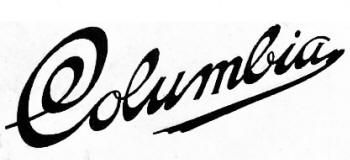The chief objection to the chain and sprocket drive system for a bicycle is that it begins to wear with its first use, in such a fashion that cannot be compensated for. The chain being the more fragile component of the chain and sprocket system eventually stretches so far from its original pitch, so as to not mesh with its sprocket and fails to operate. Repair to the chain is impossible and replacement of the chain is required. The adjustable bevel gear drive system is far more durable. As the gears wear, the bevels can be brought closer together and the original mechanical efficiency restored.
The preceding argument is as true today as when it was first posed in the early 1890's. The Acatene was already proving the advantages of the Chainless bicycle in France when the first American Chainless was built by the League Cycle Company in 1892. In spite of much refinement from the 75 lb. 1892 League Chainless to the 24 lb. 1896 League Chainless, it was the Pope Manufacturing Company that put the Chainless on American roads. Some will argue that the Pope Chainless bicycles were simply better, others that the Pope reputation sold more Chainless, and still others, that the Pope purchase of all of Leagues' Chainless patents made Pope the dominant Chainless influence. It is nevertheless well evidenced by the number and conditions of Pope Chainless that exist today that Pope Chainless are worthy of study. Pope Manufacturing Company was primarily responsible for the Columbia brand bicycles, which from 1898 to 1920 offered a Chainless model. Other bicycle companies acquired by Pope Manufacturing Company incorporated Chainless designs either similar or identical to Columbia.
In addition to the number of Columbia Chainless bicycles that exist today, there are also a number of Columbia documents about. Columbia Chainless bicycles in the hands of collector's range from the initial 1898 models to at least one 1915 model.
Columbia Chainless Identifier Second Revision
Now available in a more easily readable PDF format.


